This homemade Quick and Easy Rough Puff Pastry is beautifully flaky and buttery. Delicious puff pastry made from scratch that tastes infinitely better than frozen, store-bought puff pastry and it only takes 30 minutes of your time? Almost too good to be true!
Flaky, buttery, homemade Easy Rough Puff Pastry is PERFECT for a variety of appetizers recipes and dessert recipes!
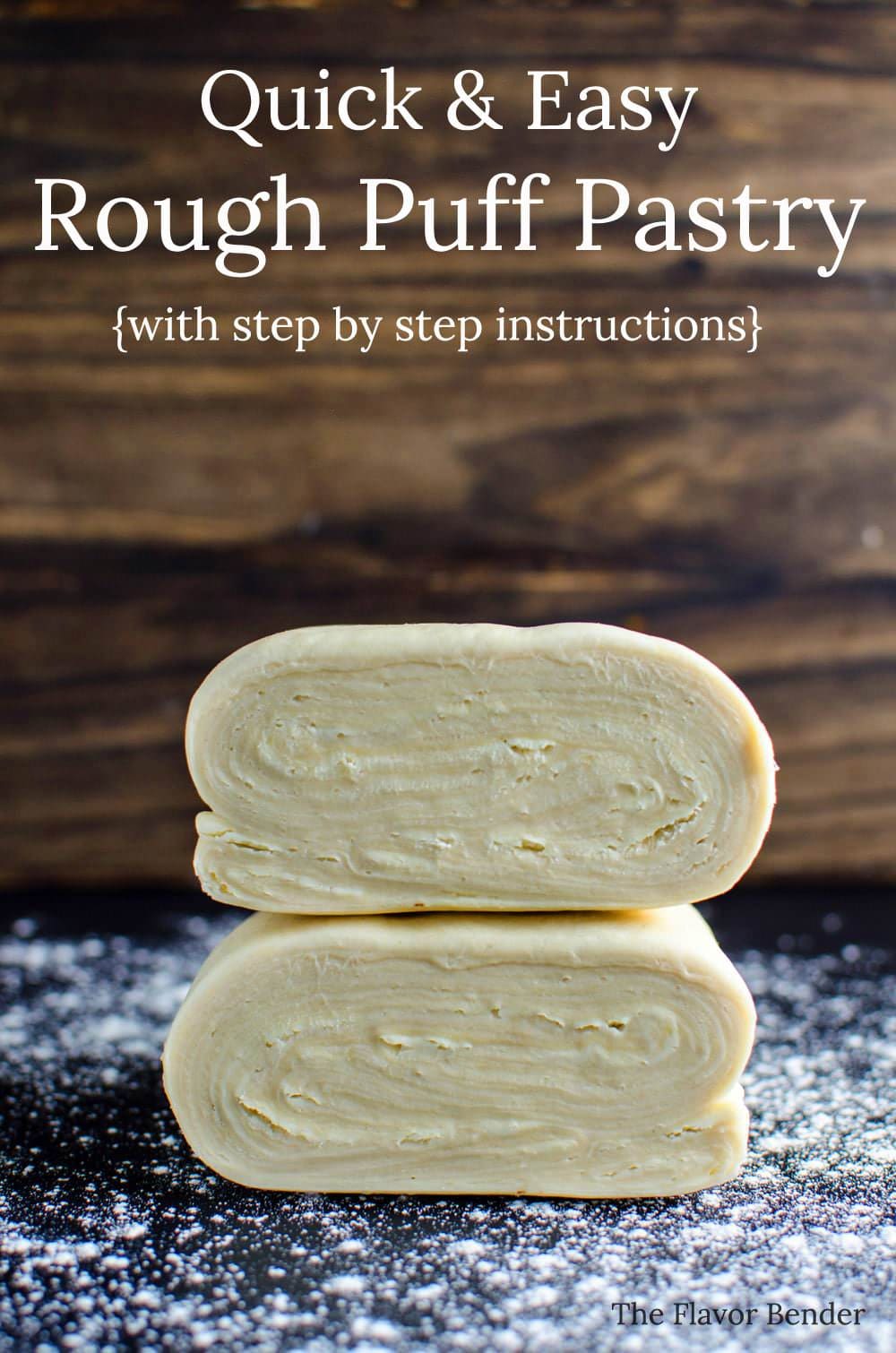
What is puff pastry?
Originating from France, classic puff pastry is made using a dough called détrempe (pronounced day-trahmp, a basic dough made with flour, water and butter) to which you add more butter, roll it out, fold it, turn it, roll it out, fold it, turn it and on and on till you have made several such turns.
This process is called “turning the dough” or “laminating the dough” and the idea is to distribute the butter evenly in layers throughout the dough (laminating the dough layers, with butter layers).
What creates flaky pastry layers?
The sign of a good puff pastry dough (classic puff pastry or rough puff pastry) is the lamination layers. To laminate a dough you need to incorporate layers of butter into the dough by repeatedly rolling out and folding the dough and butter together which results in beautiful, paper-thin layers as you can see in the pictures of this rough puff pastry.
When this dough bakes, the moisture in the butter and dough turns to steam and lifts the layers in the dough (which is what puts the “puff” in puff pastry) resulting in thin, crispy, buttery layers of delicious pastry!
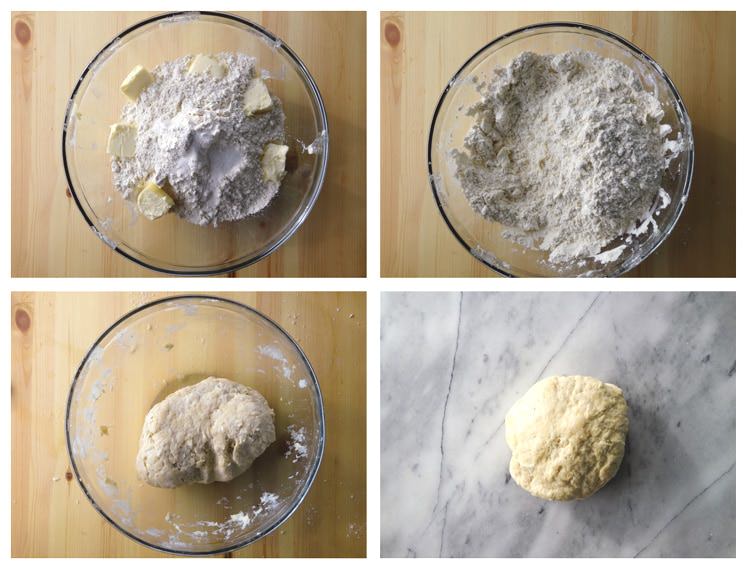
Why is homemade puff pastry better?
The simple fact is homemade puff pastry is infinitely better than store-bought, and I’m not just saying that to sell you this recipe. This really is an observable fact.
Mass-produced puff pastry available at the store, often uses sub-standard ingredients and the difference between that and the stuff you make yourself at home with love and care is pretty easy to tell.
But the thing is, classic puff pastry is an absolute pain in the ass to make. So if someone has already done it for you and it’s frozen and it’s available at the store, then there’s no reason to boycott them altogether.
I do still use store-bought puff pastry for emergencies, because life ain’t always planned, you know. But what if I told you that there’s a cheat’s version of puff pastry out there? Also known as “Rough Puff Pastry”?
What is rough puff pastry?
Rough puff pastry is a cheat’s way of making puff pastry, a QUICK AND EASY Puff Pastry, if you will. This only takes 30-45 minutes of your time (30 on a cold day and 45 on a hot summer day), and is just as good as classic puff pastry and tastes downright phenomenal!
This method of making puff pastry takes short cuts, cutting down on the time it takes to make puff pastry – thus giving you a “rough” puff pastry.
There are two ways to make rough puff pastry
- Grating the butter, and incorporating the butter in TWO folds. This will increase the lamination layer with fewer folds. You still have to make sure the butter doesn’t melt, and the ingredients are super cold to maintain the dough and butter layers, but it is easier to fold and roll out because the butter is grated (and not in a block). Since you do maintain the laminated layers, you still get flaky, puffed layers as it bakes.
- Shortcrust style puff pastry – The butter is mixed into the dough in chunks, using the food processor. The dough is folded and rolled to create layers, while there are still chunks of butter in the dough. You don’t create dough-butter laminated layers with this method, and alternatively rely on chunks of butter IN the dough to make the dough flaky. This method is faster, but the result looks more like extra flaky pie dough (instead of beautiful layers of flaky puff pastry).
The recipe I’m sharing here is for the first method. I prefer this over the shortcrust method too. This is because the grated butter method mimics the puff pastry much better than the shortcrust method, which is more like an extra flaky pie crust.
What can I make with this puff pastry recipe?
You can use this rough puff pastry for any recipe that calls for puff pastry! From sausage rolls to pies, to tarts, to desserts! Anything you can think of that calls for puff pastry.
What’s the difference between the classic and shortcut version
Classic puff pastry takes several hours to make with lengthy resting steps in the middle, but this Quick and Easy rough puff pastry recipe cuts it down to about 30-45 minutes (not counting the non-active prep time to freeze the ingredients). Yet, the pastry still comes out unbelievably well.
Those beautiful flaky layers puff up as they bake (not to the same extent as classic puff pastry, but this difference is quite negligible to me). And the recipe is quite flexible too. You can use a little less butter if you prefer, and you will still get deliciously puffy, flaky pastry.
How to make rough puff pastry (step by step instructions)
The basic dough (détrempe)
First step is to make the basic dough. This is easy and only requires AP flour, water, salt, butter and a little vinegar.
The butter can be incorporated into the dough in anyway you like. You can rub the butter into the four, or grate the butter and add it to the dough. Melting the butter isn’t a good idea though because you want to keep the dough as cold as possible.
Make sure the flour, butter, and water are chilled before making the dough. Don’t forget to add the vinegar as well. You can add lemon/lime juice, or white wine vinegar or white vinegar or even citric acid powder as the vinegar. Once the dough is made, let it chill in the fridge so that the gluten is allowed to rest more.
Why is vinegar (or an acid) important?
The reason why an acid (typically in the form of vinegar) is important for the dough is that the acid helps relax the gluten in the flour. This makes it easier to roll out. You can use any of the following as an acid.
- Lemon or lime juice – this can add some flavor to the dough as well.
- White vinegar and white wine vinegar has less of an after-taste.
- Citric acid adds the least after-taste of all these options.
Incorporate the butter layers
There is a total of FIVE lamination steps in this rough puff pastry recipe. The first two lamination steps are to incorporate the butter into the dough. This will increase the buttery lamination layers in fewer folds (basically that means better results with less effort).
The first fold
Roll out the chilled dough into a long rectangle. The length and width don’t really matter, but I usually go for at least 6 – 7 inches in width, and 15 – 16 inches in length.
Place the half of the butter on 2/3 of the rolled out dough, and then fold over the 1/3 of the dough with no butter, over the middle 1/3 of the dough with butter. Then fold over final 1/3 of the dough with butter, over the top.
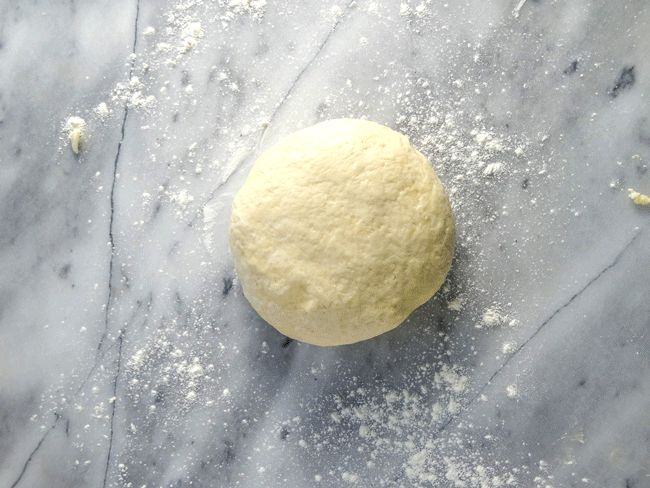
Second fold
Turn the dough 90 degrees and roll it out again, into a rectangle (5 – 6 inches x 15 – 16 inches).
Repeat the same process with the remaining butter.
Work quickly through this process so that the dough will remain nice and cold and the butter won’t melt.
If it’s summer or a particularly hot day where you live, the dough and butter might warm up and soften. Don’t worry if this happens, just quickly put it in the fridge or freezer for a few minutes to firm up the butter again. You don’t want the butter to soften, as it can melt and incorporate into the dough while folding and rolling, and then you will lose the lamination layers.
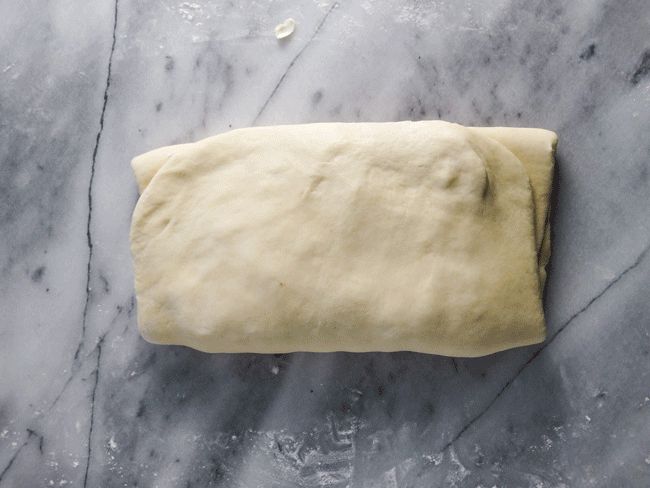
Creating more butter dough layers (increasing lamination)
After the butter has been incorporated, it’s time to repeat the folds THREE MORE TIMES.
The remaining folds
Turn the dough another quarter turn and roll it out to a similar sized rectangle as before. Fold it into thirds (just like before, but without the butter).
Rotate the dough another quarter turn, and repeat two more times.
In total, this recipe for rough puff pastry will create a whopping 171 layers of butter within the dough, with just five folds!
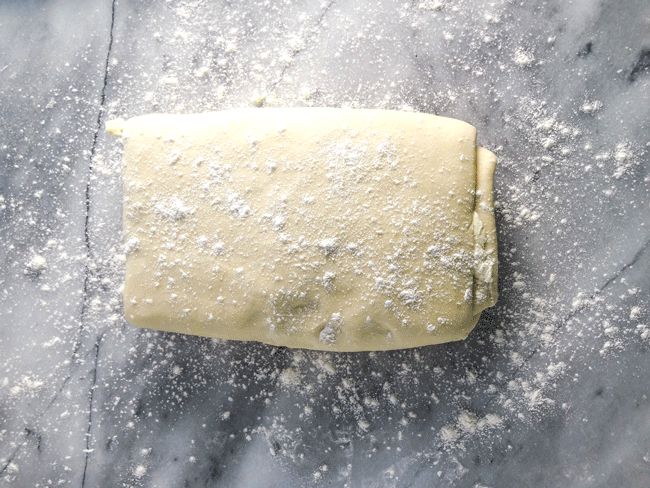
Once the folds have been completed, tightly wrap the dough in plastic wrap, and refrigerate until needed. I personally prefer to cut the dough in half and wrap each portion separately (so that I can freeze the portion I don’t need for later).
Store the wrapped dough in the fridge for at least 30 minutes (longer is even better), to rest the gluten in the dough. It will be much easier to roll out the dough the more you rest it at this stage.
Do you find that your rough puff pastry dough isn’t rolling out easily, or rolling out nice and thin?
Or do you find that the puff pastry dough shrinks as you roll it out, or as you bake it?
This is because you didn’t let the dough rest properly after making the puff pastry. Wrap it again, and let it rest in the fridge for longer. The amount of time you need to rest the dough can vary, so keep that in mind.
Why make rough puff pastry at home
- It’s cheaper to make your own puff pastry at home.
- Tastes better. Seriously, it’s not even close. I cannot stress this enough.
- Since it’s rough puff pastry, it’s much faster than making classic puff pastry.
- Since all the ingredients are ice cold and the butter is grated and frozen before use, it makes it easier to handle the dough – to roll it out and fold the dough.
Take a look at that lamination in the photo right at the top of the post, if you don’t believe me. Doesn’t that look beautiful? Perfect homemade quick and easy rough puff pastry achieved in 30 minutes (might be about 45 on a hot day)!
How to store this cheat’s puff pastry
Make sure the dough is wrapped tightly with plastic wrap. Even two layers to make sure it’s not in contact with air so that it doesn’t dry out. You can wrap this again in foil, or put it in an air-tight container as well.
I have stored this rough puff pastry in the fridge for up to 5 days. And YES, this rough puff pastry dough can be frozen too, for up to one month. After using the dough, the remaining scraps could maybe re-rolled once. However if you knead or handle it too much, the lamination layers will be lost.
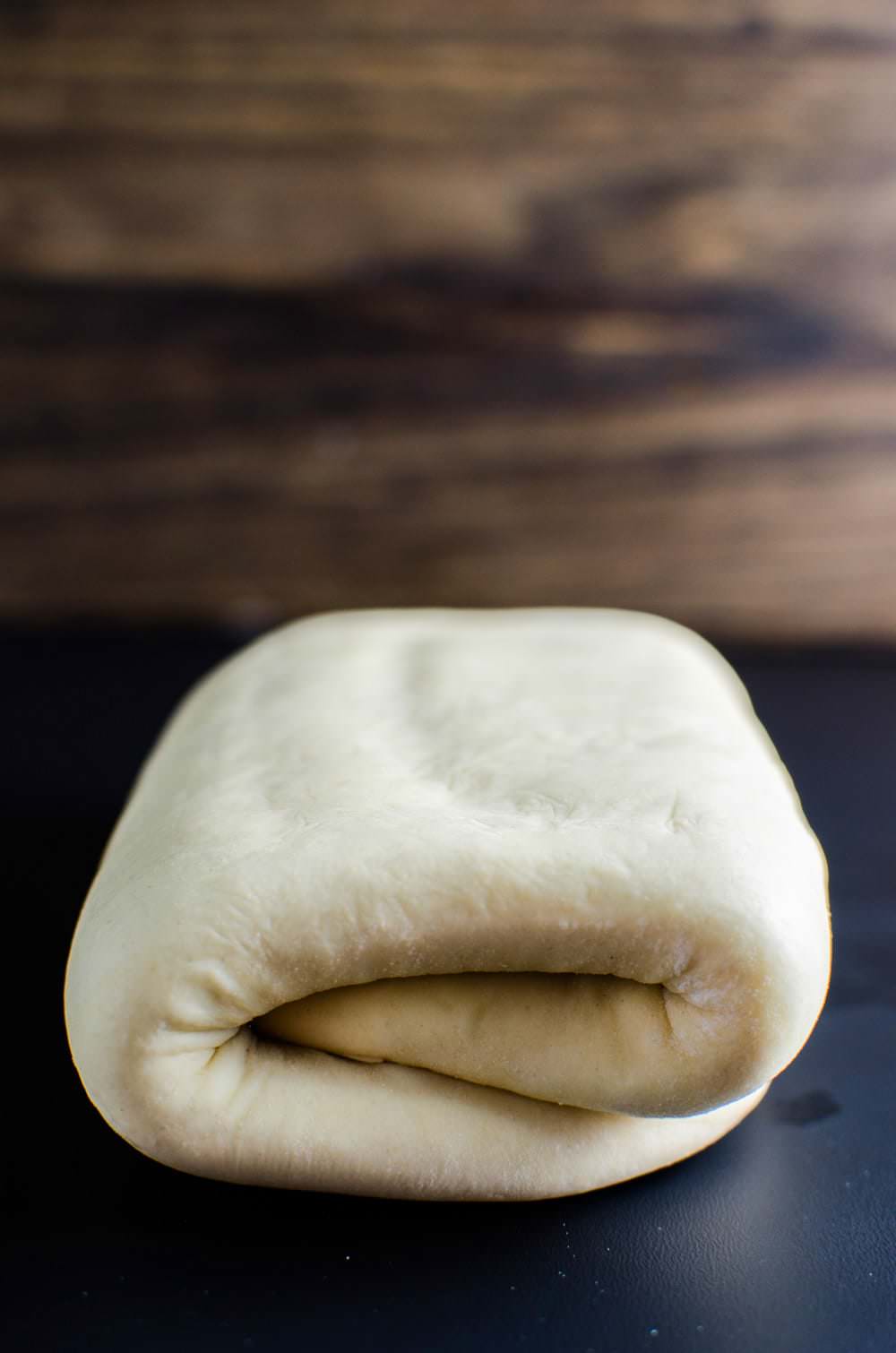
What can rough puff pastry be used for?
This recipe is an absolute godsend if you’re entertaining guests or hosting a party or family festivities. Good quality puff pastry is the perfect base for tasty appetizers and party food.
You can make so many great recipes with puff pastry. Like delicious puff pastry appetizers and snacks, desserts and even meals using this rough puff pastry like,
Sausage rolls
Mini hand pies
Mini tarts
More appetizers
Great brunch or lunch or dinners
So save, share and pin this tutorial and make your own puff pastry right at home and then even save a batch in your fridge. This rough puff pastry has been a lifesaver for me on many occasions! How do you like your puff pastry? Savory or sweet?
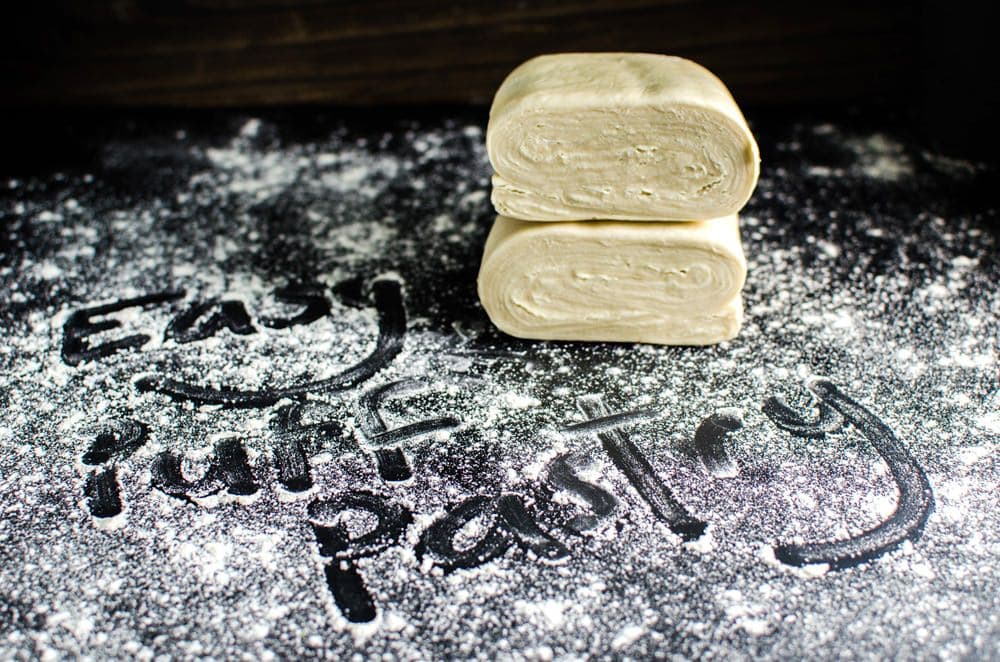
EQUIPMENT & TOOLS I USED FOR THIS RECIPE
- Grater – to grate the frozen butter
- Flat Mixing Bowls – I like these wide flat bowls if I’m kneading dough by hand. It’s easier to access the dough and knead it.
- Rolling pin – A heavy rolling pin to roll out the dough to create laminated layers
Looking for more recipes?Sign up for my free recipe newsletter to get new recipes in your inbox each week! Find me sharing more inspiration on Pinterest and Instagram.
Easy Rough Puff Pastry
Ingredients:
- 2.1 oz unsalted butter grated and frozen
- 7 oz unsalted butter grated and frozen (weigh the butter after grating it)
- 12.3 oz AP flour that has been kept in the freezer for a couple of hours
- 8-10 tbsp ice cold water I used about 9.5 tbsp (142mL)
- 1 tsp salt
- 1/2 tsp lemon / lime juice (or white vinegar)
Instructions:
- In a bowl, combine the flour, salt and the 60 g / 2.1 oz of butter. With your fingers quickly rub the butter into the flour.
- Add the lemon and water, a tablespoon at a time, while mixing with a wooden spoon or your finger tips to bring the dough together.
- Add enough water to form a firm dough (that is not tacky or too wet).
- Knead the dough on a floured surface for about a minute, and leave it to rest for about 5 minutes (in the fridge).
- Roll the dough out into a long rectangle (about 6 – 7 inches wide, and 15 – 16 inches long).
- Sprinkle 100 g / 3.5 oz of grated butter on 2/3rds of the area of this rectangle.
- Fold over the portion without butter, towards the middle.
- Then fold over the other end, over the first fold. You completed one fold (while laminating butter).
- Turn the dough 90 degrees and roll it out to form another long rectangle (about 5 – 6 inches wide, and 15 – 16 inches long).
- Repeat with the rest of the butter and fold over, (completed 2nd fold with second lamination) and turn 90 degrees. Now you have incorporated all the butter in two folds.
- Complete 3 more folds so you have folded the dough about 5 times. You shouldn’t need to refrigerate between folds, if you work quickly, HOWEVER if it’s a hot day and the butter starts to seep through, keep the dough in the freezer for about 10 minutes to harden the butter and continue.
- After the fifth and final folding, wrap the dough in plastic wrap and store it in the fridge until needed.
- Let it rest for at least 2 hours before using. (I prefer to leave it longer, even overnight for best results.)
- If you’re not using it right away, cut the dough in half, wrap individual pieces in plastic wrap and store in the freezer.
Tips & Tricks
Nutrition Information:
“This website provides approximate nutrition information for convenience and as a courtesy only. Nutrition data is gathered primarily from the USDA Food Composition Database, whenever available, or otherwise other online calculators.”
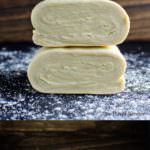
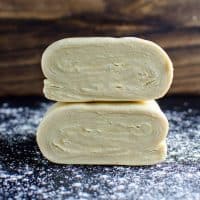

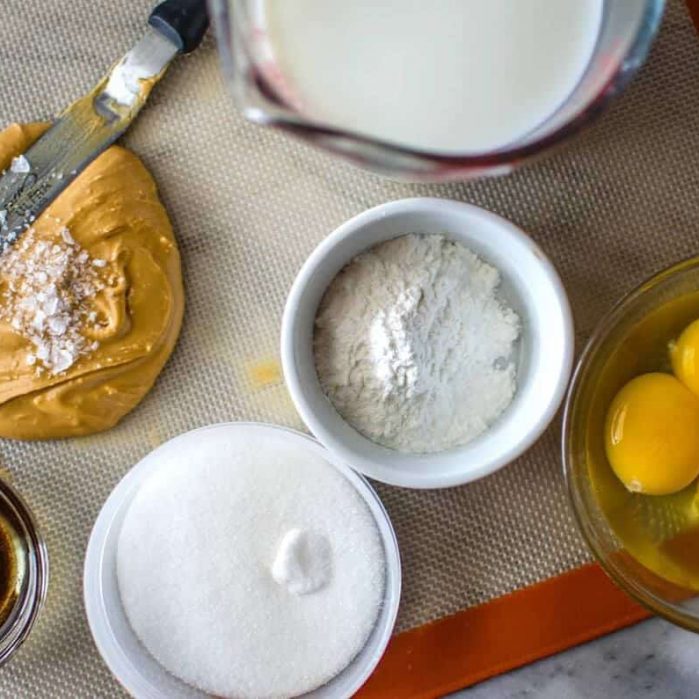
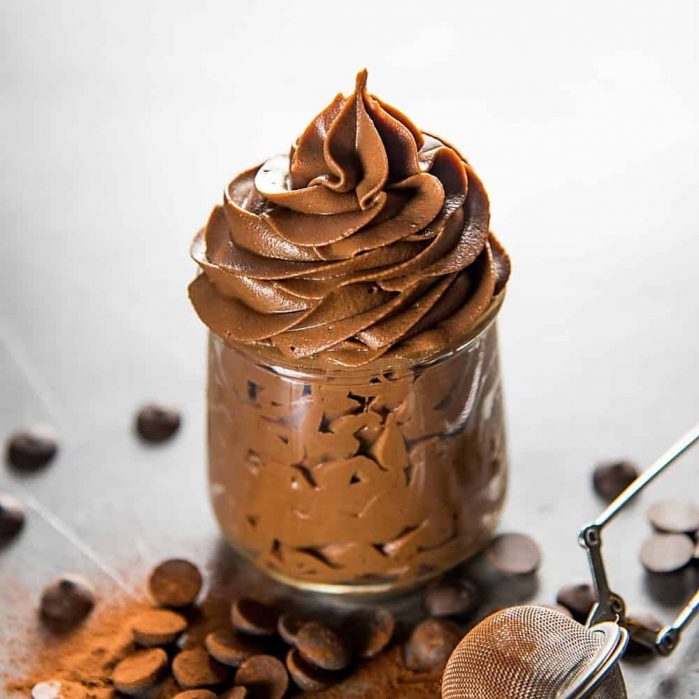
Diana says
How thin do you roll in in inches? Was always afraid to try this but your directions are amazingly easy to understand and it’s definitely a doable project for me to try….thank you.
Dini says
Hi Diana!
It definitely is easier to make than the classic version, but you still get great results!
Are you asking for the thin-ness to laminate the dough, or how thin I roll it out to make pastries with it later?
For laminating, I go by size than thin/thickness so that it’s more accurate.
To roll it out to make pastries, that entirely depends on what I’m making. Usually between 1/8th – 1/4th of an inch. I hope that helps!
Kylie says
Hi Dini
I’m so glad I’ve found your recipe!
I’m not sure what part of the world you are in but here in the UK there is a TV programme called ‘The Great British Bake Off’ and every year the teachers where I work “play along” we each pick a contestants name out of a hat and when they get booted off the show, us teachers have to bake something This has been going on for a few years and I’ve always made some sort of cake…. This year however everyone has stepped up their game!! ♀️ So I’ve had to do the same and had the idea of making puff pastry twists, although there are dietary requirements needed, so I’m planning on making 2 different sets (14 cheese and bacon twists and 14 dark choc, hazelnut and tahini twists ♀️) 1st question: I’m planning on making this in preparation, how long will it keep in the freezer?
2nd: How long does it take to thaw before rolling?
3rd: Will it be enough for what I’m needing to do with it?
And 4th: Can you come and do it for me!!?
Any advice would be great! xx I’ve never attempted anything like this before so
Oh and for anyone reading this, if it goes horribly wrong it’s the cook ♀️definitely not the recipe!! ❤️
Judy says
Haha. Good one. I hope your attempt was successful. Love Great British Bake Off. I’m about to try my hand at this recipe now…. and make some Arlettes after learning about them from GBO. Paul Hollywood rocks. ❤️
Razyl says
I think she meant how thin to roll the rectangle, at least that’s what I was wondering
Amanda says
After testing it in the fridge for 4 hours, do you roll it out in that folded up state, or do you unfold it so that it is flattened out a bit first?
Dini says
Hi Amanda
You roll it out in the folded stage, otherwise you will lose the lamination layers you created.
Hope that helps!
Dawn says
How many sheets does this make.?
Dini says
Hi Dawn!
The number of sheets will depend on how large you want the sheets to be, and how thin you will be rolling out the dough too. However it does yield 1 1/2 lbs of rough puff pastry dough. I hope that helps!
BakersCo says
I have to admit, even at the height of my pastry phase, puff pastry seemed to intimidating to try. This recipie is amazing however. I made it in under 4 hours, which is included everything from grating the butter to baking the pie. I cut back on the resting time for the dough, which didn’t seem to hurt it too much. Will definately repeat this again! Thank you!
Sarah Koehler says
I have been thinking about making puff pastry for a while. So glad I found your recipe. First day: Every step I felt like I was doing something wrong. My initial dough seemed too wet, I had trouble getting a big enough rectangle, my butter kept showing through (so I kept putting it in the freezer). After my 5th fold I cut it in half to store it – I was absolutely thrilled to see all the layers! Next morning: rolled out my dough and sliced Palmier cookies. They don’t look like ones that you’d get in a shop but the layers were beautiful and the pastry is delish. Thank you!! This is a great recipe. The pastry comes out perfect. Now to tackle my own perfection issues 🙂
Sabeen says
Hi Dini,
I live in a really hot tropical climate and I love love love puff! I’m so glad I found your blog! I’ve made the pastry in 20 min it’s resting in the fridge and I’m going to make your creamy chicken pies with it tomorrow. Can i freeze the pies unbaked but filled? Also how cold should the filling be, fridge cold or room temp? And if I omit the leeks and use mozzarella as we dont get monterrey jack, will it make a difference? Thank you and I cant wait!
Dini says
Hi Sabeen!
Yes you can make the pies and leave it in the freezer unbaked. You can bake them from frozen too, but they will need to be in the oven a few minutes longer. Room temperature filling will also be fine to fill the pies, as long as they’re not warm to “melt” the butter in the dough.
You can absolutely omit the leeks, but there maybe less of the filling without the leeks. You can use mozzarella instead of monterey jack too, but monterey jack has a different flavor from mozarella, and the taste will change. However, you could use a combination of mozzarella and white cheddar cheese if you like. Or use gouda cheese, or muenster cheese as well. I hope that helps!
Cheers,
Dini
Wilson Baker says
I had a couple of hours on my hand and a wife I like to impress so I decided to try puff pastry. I’ve never even attempted anything quite this “advanced;” I was willing to accept a fail on this project—so long as I learned something from it. Following this guide gave me better results than I had hoped for. Even after picking the wrong baking temp and time, completely winging it as I went, the pastry was tender, flaky and absolutely delicious. And I did learn a lot.
Dini says
I’m so happy to hear that, thank you so much for letting me know Wilson! Always great when you learn something, and the result is delicious and flaky too! 😉 Win-win.
Maryam says
You’re amazing dearest .this recipe is very easy and top notch.
Thank you so much.
Susan says
“Complete 3 more folds”…as in fold the folded dough 3 more times or roll out, fold into thirds 3 more times? It sounds like I just fold the folded dough again as it is written…Or does it means complete the “rolling and folding” 3 more times (without adding more butter)? Sorry if I’m being obtuse.
Dini says
Hi Susan,
I’ve described in the recipe that one fold = rolling it out and then folding it into thirds. So “3 more folds” in this context means to roll out and fold into thirds, 3 more times. NOT to fold the folded dough.
And in the case of these last 3 folds, there’s no addition of butter, because the butter is already completely incorporated during the first 2 folds. I hope that helps. Let me know if you have any other questions. Good luck! 🙂
Michelle says
Hi there
May i asked… you measure the butter first then grated or grated and measure?
Thanks
Dini says
Hi Michelle,
The butter is grated first and then measured.
Michelle says
Thank you so much for your respond. Gonna make this today
Dini says
You’re welcome. Good luck! 🙂 Let me know if you have any other questions.
Michelle Wong says
Hi there
It was a hit in my family. Everyone love the ham & egg pie that I made. I also used it for chicken pot pie. The top part of my pie is crispy and flaky. But the bottom part is still not cooked. So I put it back in the oven for another 20mins and finally its cooked. Not sure what went wrong but overall this recipe is a keeper. Thank you so much. Hubby said we don’t have to buy anymore pies in the shop. We can make our owns..
I came from a very hot country so in between folds i have to put the dough back in the freezer for 5mins before i can roll and fold them again. Xoxo
Michelle Wong says
I made the puff pastry again this evening but this time I folded 8times in between putting the dough into the freezer twice for 5 min… and rolled again… I hope its okay to fold 8times as I was trying to rescue the butter from melting all over my table…
Finger crossed as I am going to use this pastry tomorrow.
Tony says
You more than likely used a glass casserole dish and/or your chicken pot pie fillings were cold when you put the dish into the oven. Try using a thin baking dish(metal one), use hot pie fillings, and pre-bake the bottom pie crust for 10 – 15 minutes at 350 F.
Michelle Wong says
Thanks Tony for the information.
Leah says
Hi Dini, Thanks for the wonderful tutorial. I’ve always wanted to try making puff pastry but felt a bit intimidated by the process. I sometimes bake for a friend who has severe Celiac disease. Have you tried making this pastry with almond flour (or some other alternative) or heard from one of your readers who has. What were the results?
Dini says
Hi Leah!
Unfortunately, I haven’t made this recipe with other kinds of flour. However almond flour will probably not work. Almond flour lacks the ability to make the matrix that you need for this puff pastry recipe.
Gluten free flour would probably be a better substitution, but the result might be more crumbly than what you get with regular flour. You may need to use Xanthan Gum for some types of GF flours to make it work for puff pastry too.
I hope that helps!
Carol says
Excited to try this!!! Do you use unsalted or salted butter??
Dini says
Hi Carol,
Personally I prefer unsalted butter, but either salted or unsalted will work fine for this recipe. I hope that helps, good luck! 🙂
Carol says
Thanks so much!!
Julie says
This recipe is fantastic I’m so excited to have made such great pastry. I knew by the way it handled when rolled that it would be the best I had made. Thank you for the excellent direction !
Dini says
I’m glad it turned out well for you Julie! Thank you so much for letting me know! 🙂
Livi says
Hi, just wondering if this recipe suitable for Portuguese egg tart, pretzels and cheese sticks?
Dini says
Hi Livi
This is a recipe for puff pasty, and would be suitable for any recipe that uses puff pastry. You could make Portuguese egg tarts, but you will have to roll up the puff pastry, and cut spiral discs for the tart base. Cheese sticks are sticks of cheese that have been breaded and fried, so puff pastry wouldn’t be a good substitute. However, you can make puff pastry cheese straws with puff pastry as well, which are different from classic cheese straws.
Unfortunately, you cannot make pretzels with puff pastry. Pretzels are made with a yeast dough, and puff pastry is a laminated dough without yeast.
I hope that helps!
Elise says
Hello! I am attempting to make puff pastry for the first time and was wanting to use this recipe after I make it. Is it able to be used right away after I make it or does it need to be refrigerated and then rest for 4 hours before using? Thanks!
Dini says
Hi Elise,
Yes, it does need to be rested in the fridge for 4 hours. This allows the gluten to relax, so it can be rolled out better and more easily. But if you’re in a hurry, then you could try it and see after 2 hours of resting, but if the dough isn’t rolling out properly and starts shrinking, that means you may need to rest it for the full 4 hours. I hope that helps.
Elise says
Thank you for the quick reply and explanation!
batool says
Dear Dini,
your recipe says 60 gm butter to start dough.
then it calls for 200gms of butter for the layering.Little confused coz you ask for 100 gm in 1st layer and another 100 gm in 2nd layer
the instruction go on to make 5 layers. Does that mean that every layer has to have 100 gm of butter or do i just repeat the last 3 layers without butter.Wasnt sure I understood.
Hope to get a reply.Iam rating it at 5 coz it looks very doable.
Dini says
Hi batool,
Yes, the 200g of butter for layering are used in the first two folds (100g each). The next 3 folds are done without butter. Let me know if you have any other questions, good luck!